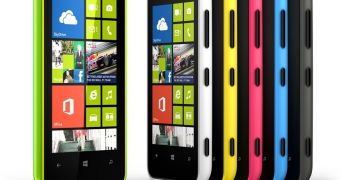Lumia 620, the latest Windows Phone 8 smartphone from Nokia and also the cheapest in the series, is expected to arrive on shelves in Australia in mid-February, featuring a recommended retail price of $329 AUD ($342 USD / €252).
The new smartphone sports a 3.8-inch screen, a 1GHz processor, 512MB of RAM and a 5-megapixel photo snapper, but it can provide users with all the features and capabilities that Windows Phone 8 was packed with.
According to a recent article on The Australian Financial Review, Nokia’s CEO Stephen Elop confirmed the upcoming availability of the smartphone in the country at a recent meeting with reporters in Sydney, but he did not offer further details on the matter.
He did say, however, that the compatibility with Microsoft Office products that this device comes with makes it an appealing option for corporate customers, and that many have already announced their interest in the phone.
Furthermore, the company’s CEO confirmed that Nokia was looking into launching new handsets at low price points, so as to make the Windows Phone 8 platform available for even more users.
“It is the case that in the months and years ahead, you will see us broaden out the portfolio, which means pushing to lower and lower price points, in some cases smaller form factors and so forth,” Elop reportedly said.
At the moment, Nokia is committed to both Windows Phone 8-powered Lumia handsets and Series 40-based Asha devices, and Elop might have been referring to both families of devices when mentioning the lower price tags.
One thing that remains certain at the moment is that Nokia does not plan on launching Android-based smartphones anytime soon, especially with Samsung leading the smartphone segment with devices powered by Google’s mobile OS.
“If we look back two years to when we made the decisions [to move to Windows Phone, n.a.], then Samsung was big, HTC was pretty big and Motorola was pretty big,” Elop said.
“Of course what has happened in the two years is that Samsung has captured the lion’s share of it and the others have been squeezed down to much smaller market share. We were worried about exactly that pattern forming.”

 14 DAY TRIAL //
14 DAY TRIAL //